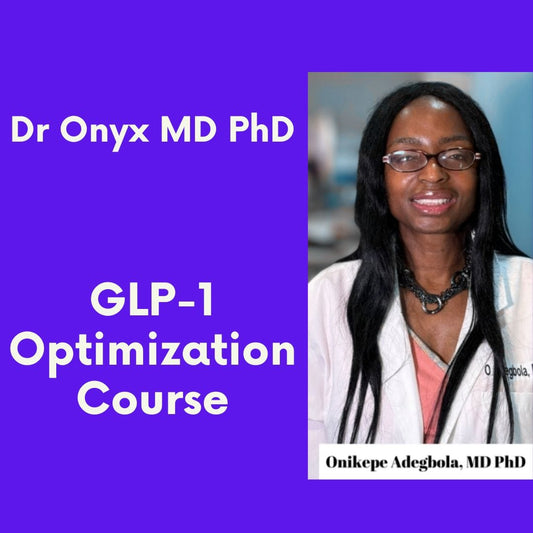Essential Lifestyle Adjustments to Make While on GLP-1 Medications
GLP-1 medications like Ozempic, Wegovy, and Mounjaro have revolutionized weight management and diabetes treatment. These medications work by mimicking the hormone glucagon-like peptide-1, helping to regulate blood sugar, slow digestion, and reduce appetite. While these medications can be remarkably effective, they work best when paired with thoughtful lifestyle modifications. Making certain adjustments to your daily habits can not only enhance the effectiveness of these medications but also help minimize potential side effects and promote long-term health.
Understanding How GLP-1 Medications Affect Your Body
Before diving into lifestyle changes, it's important to understand how these medications influence your body's systems. GLP-1 receptor agonists slow gastric emptying, meaning food stays in your stomach longer. This creates a prolonged feeling of fullness and reduces hunger signals. They also affect the brain's appetite centers, decreasing cravings and the desire to eat large portions.
Additionally, these medications help your pancreas release insulin only when blood sugar levels are high, reducing the risk of hypoglycemia while improving overall blood sugar control. This multi-faceted approach explains why they're so effective—but also why they require lifestyle adjustments to maximize benefits and minimize discomfort.
The mechanism of GLP-1 medications mimics the natural incretin hormone produced in your intestines after eating. This hormone normally signals satiety and helps regulate glucose metabolism. However, the pharmaceutical versions have been engineered to last much longer in the bloodstream—from hours to days depending on the specific medication—creating a sustained effect that natural GLP-1 doesn't provide. This extended action time is why many patients experience such dramatic changes in their eating patterns and energy utilization.
Beyond their effects on appetite and digestion, GLP-1 medications also influence fat metabolism and energy expenditure. Research suggests they may alter the way your body stores and burns fat, potentially redirecting energy usage from storage to expenditure. They've also been shown to reduce inflammation in adipose tissue and improve cardiovascular markers like blood pressure and cholesterol levels, explaining why benefits often extend beyond weight loss and glucose control.
Common Side Effects and Challenges
Many patients experience digestive side effects when starting GLP-1 medications. Nausea, constipation, and occasional vomiting are common, especially during the first few weeks as your body adjusts. Some people also report fatigue, headaches, or dizziness. While these side effects often diminish over time, making appropriate lifestyle changes can significantly reduce their impact on your daily life.
Understanding that these medications fundamentally change how your body processes food and signals hunger is key to adapting successfully. The lifestyle adjustments discussed below are designed to work in harmony with these physiological changes rather than against them.
Nutrition Adjustments for GLP-1 Success
Perhaps the most significant adjustments you'll need to make involve your eating habits. GLP-1 medications dramatically change your relationship with food, requiring thoughtful adaptation of both what and how you eat.
Portion Control and Meal Timing
With reduced hunger signals and slower digestion, large meals can quickly become uncomfortable. Most patients find success with smaller, more frequent meals throughout the day. Try dividing your food intake into 4-6 small meals rather than three large ones. This approach helps prevent overfilling your stomach while still providing consistent nutrition.
Pay attention to your body's new fullness cues—many patients report feeling satisfied with much smaller portions than before. Using smaller plates and bowls can help visually adjust to these new portion sizes. Remember that it takes time for your brain to register fullness, so eat slowly and pause between bites to assess your satiety level.
Protein Prioritization
Protein becomes especially important while on GLP-1 medications. As your overall caloric intake decreases, ensuring adequate protein consumption helps preserve muscle mass during weight loss. Aim for lean protein sources like chicken, fish, tofu, legumes, or low-fat dairy with every meal.
Many dietitians recommend consuming 1.2-1.6 grams of protein per kilogram of body weight daily while on these medications. This might mean restructuring your plate to make protein the star rather than carbohydrates. Starting each meal with protein can also help minimize blood sugar fluctuations.
Hydration and Fiber Balance
Constipation is a common side effect of GLP-1 medications, making proper hydration and fiber intake crucial. Aim for at least 2-3 liters of water daily, and consider tracking your intake until this becomes habitual. Some patients find that drinking a full glass of water upon waking helps establish good hydration patterns for the day.
While fiber is important for digestive health, suddenly increasing fiber intake can worsen GI symptoms. Start with modest amounts and gradually increase to 25-30 grams daily. Incorporate fiber-rich foods like vegetables, fruits, and whole grains thoughtfully, paying attention to how your body responds. Some patients find that cooked vegetables are better tolerated than raw ones, especially in the beginning.
Physical Activity Considerations
Exercise remains a vital component of health while on GLP-1 medications, but you may need to adjust your approach. These medications can affect your energy levels and exercise capacity, particularly during the initial adjustment period.
Adapting Exercise Intensity and Timing
Many patients report fatigue or reduced stamina when first starting GLP-1 medications. Rather than abandoning exercise altogether, consider temporarily reducing the intensity or duration of your workouts. For example, if you typically run for 30 minutes, try a 15-minute jog or switch to walking temporarily.
Experiment with exercise timing in relation to medication administration and meals. Some find that working out before taking their medication or several hours after helps minimize nausea or dizziness. Others discover that very gentle movement like walking after meals helps with digestion and reduces discomfort.
Strength Training Importance
As weight loss accelerates on GLP-1 medications, preserving muscle mass becomes increasingly important. Incorporate resistance training at least 2-3 times weekly to maintain muscle and support metabolic health. This doesn't necessarily mean heavy weightlifting—bodyweight exercises, resistance bands, or light dumbbells can be effective, especially when beginning.
Focus on compound movements that work multiple muscle groups simultaneously, such as squats, lunges, push-ups, and rows. These exercises deliver maximum benefit with minimal time investment. Consider working with a fitness professional who has experience with clients on weight management medications to develop an appropriate program.
Sleep and Stress Management
The physiological changes triggered by GLP-1 medications can affect sleep patterns and stress responses. Proactively addressing these areas can significantly improve your overall experience and results.
Optimizing Sleep Quality
Some patients report changes in sleep patterns while on GLP-1 medications. You might find yourself needing more rest as your body adjusts to significant metabolic changes. Prioritize sleep hygiene by maintaining consistent sleep and wake times, creating a cool, dark sleeping environment, and limiting screen time before bed.
If nausea or reflux interferes with sleep, try elevating the head of your bed slightly and avoid eating within 2-3 hours of bedtime. Some patients find that a small protein snack before bed helps stabilize blood sugar throughout the night and improves sleep quality.
Stress Reduction Techniques
The physical adjustments and potential side effects of GLP-1 medications can temporarily increase stress levels. Additionally, changing body composition and relationship with food may trigger emotional responses. Implementing stress management techniques like deep breathing, meditation, or gentle yoga can help navigate these changes more comfortably.
Consider keeping a journal to track not just physical symptoms but emotional responses as well. This can help identify patterns and develop personalized coping strategies. Many patients find that mindfulness practices help them connect more authentically with their body's new hunger and fullness signals.
Medical Monitoring and Adjustments
While lifestyle changes are crucial, maintaining appropriate medical oversight ensures safety and optimizes outcomes while on GLP-1 medications.
Regular Check-ins with Healthcare Providers
Establish a schedule for regular follow-ups with your healthcare team. These appointments allow for medication adjustments, side effect management, and monitoring of vital health markers. Be prepared to discuss any challenges you're experiencing honestly—your provider may have simple solutions that can significantly improve your comfort.
Between appointments, keep detailed notes about side effects, energy levels, hunger patterns, and any concerning symptoms. This information helps your healthcare team make informed recommendations tailored to your specific response. Many patients find that digital health apps designed for GLP-1 medication users can simplify this tracking process.
Supplement Considerations
With reduced food intake, nutritional deficiencies become a potential concern. Your healthcare provider may recommend specific supplements based on your individual needs. Common recommendations include a high-quality multivitamin, vitamin D, calcium, and vitamin B12.
Some patients benefit from digestive enzyme supplements or probiotics to ease gastrointestinal symptoms, though these should be discussed with your healthcare provider before starting. Timing supplements appropriately—often with meals—can improve absorption and reduce the likelihood of nausea.
Social and Psychological Adjustments
The changes brought about by GLP-1 medications extend beyond the physical. Many patients find that social situations involving food and their psychological relationship with eating require thoughtful navigation.
Navigating Social Situations
Dining out, family gatherings, and celebrations often center around food. Develop strategies for these occasions, such as eating a small protein-rich snack before events, scanning menus in advance to identify suitable options, or simply being open with friends and family about your changing needs.
Remember that you don't need to explain your medical choices to everyone. Simple phrases like "I'm making some health changes" or "I'm listening to my body more carefully these days" can suffice when declining second helpings or rich desserts. True friends will support your health journey without detailed explanations.
The lifestyle adjustments required while taking GLP-1 medications may seem numerous, but they typically become second nature over time. By thoughtfully adapting your nutrition, physical activity, sleep habits, and medical monitoring, you can maximize the benefits of these medications while minimizing discomfort. Remember that these changes support not just weight management but overall metabolic health and wellbeing. With patience and persistence, most patients find a new equilibrium that supports long-term success.

















